Εleftheria Deko: The Alchemist of Light.
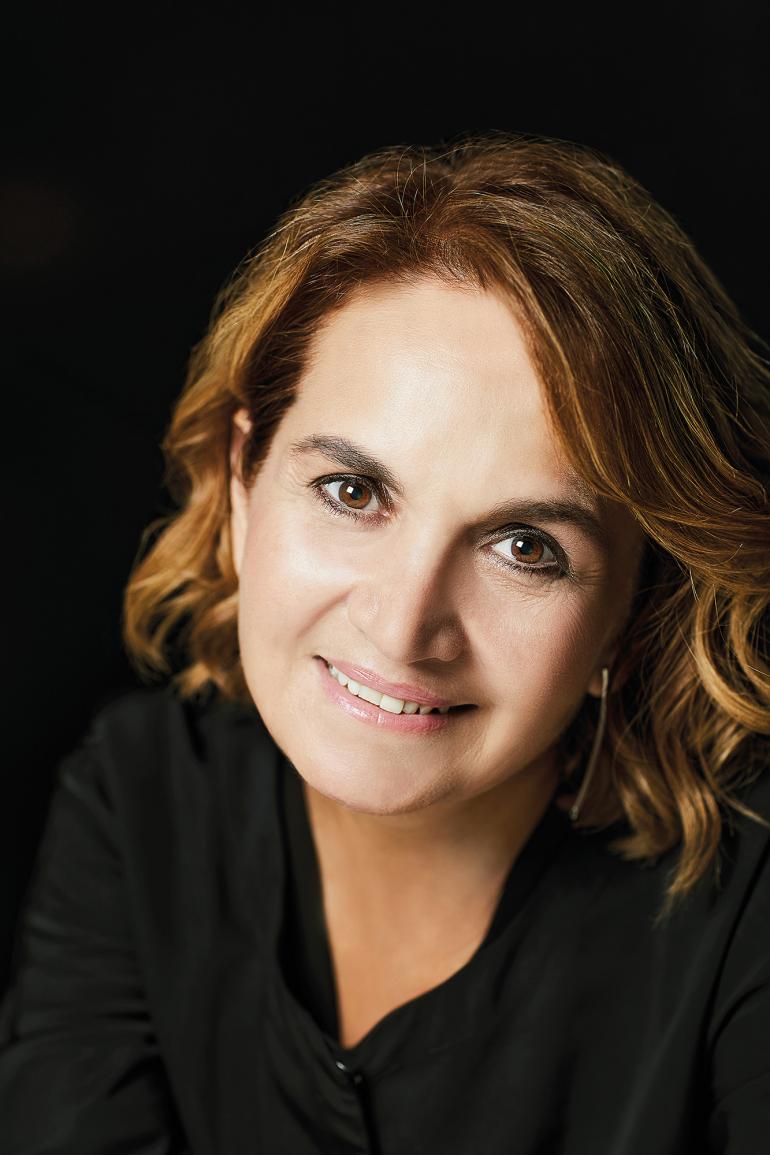
She illuminated wonders of antiquity and the modern world. The title of national lighting designer rightfully belongs to her.
With an impressive portfolio spanning over 500 productions in theatre, music, dance, opera, and art installations, her lighting designs have captivated audiences. Her work graces public spaces, private residences, museums, monuments, hotels, restaurants, shopping centres and squares. She gained worldwide recognition as a designer and lighting director for the opening and closing ceremonies of the 2004 Olympic Games, she left an indelible mark by illuminating the iconic Athens Acropolis, earning rave reviews, and prestigious international awards including an Emmy. In essence, she has woven a radiant tapestry of light for the world.
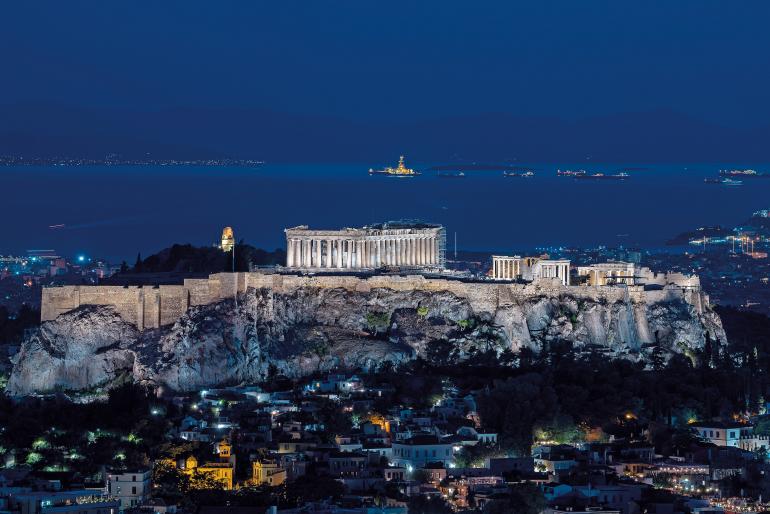
©️Gavriil Papadiotis
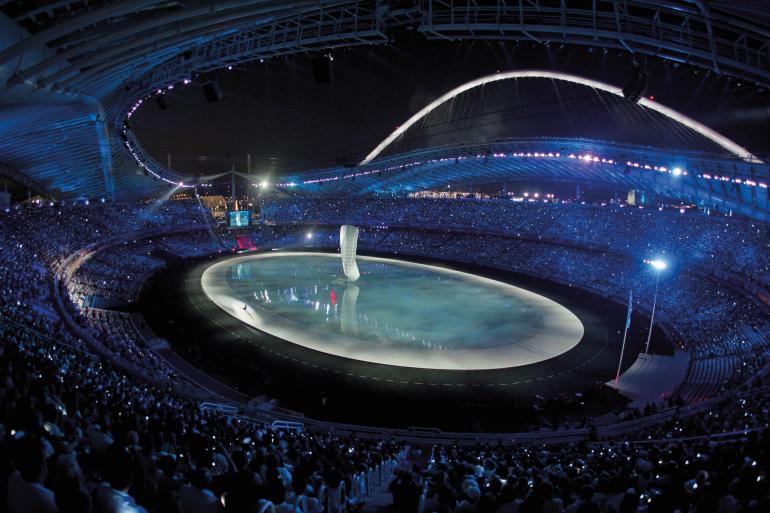
©️Jonathan Ferrey/Getty Images/Ideal Image
You were born and raised in Athens. Tell us a little about those years of your life.
During my early years, we lived in Mets, an area of Athens. We played hide and seek and chased each other in the street. We didn’t have a playground. There were very few cars, so you felt safe. As a child, I adored group games and had a natural talent for artistic endeavours like painting and construction. Although I was a shy and introspective kid, I had a vivid imagination and a romantic disposition. In sixth grade, my dad bought me a camera. It was my most cherished possession and was pure magic to me! I could peer through its viewfinder and explore the world, but I hesitated to press the shutter button too often. Developing film was expensive back then, and I had to be selective with the pictures I took. That made every click valuable, and my focus sharpened on capturing what truly mattered.
You come from the beautiful island of Tinos. Did your summers revolve around your time there?
Tinos has always been the epitome of our family vacations. It instilled in me a love for the interplay of light and shadow, the boundlessness of the world, and the beauty found in little details.
You studied literature and classical dance. How does a philologist and dancer decide to work in the art of lighting?
Degrees in English literature and dance propelled me into graduate school at NYU. There, I obtained a scholarship in dance and embarked on a new chapter in New York City. Dance was the impetus for my fascination with stage lighting.
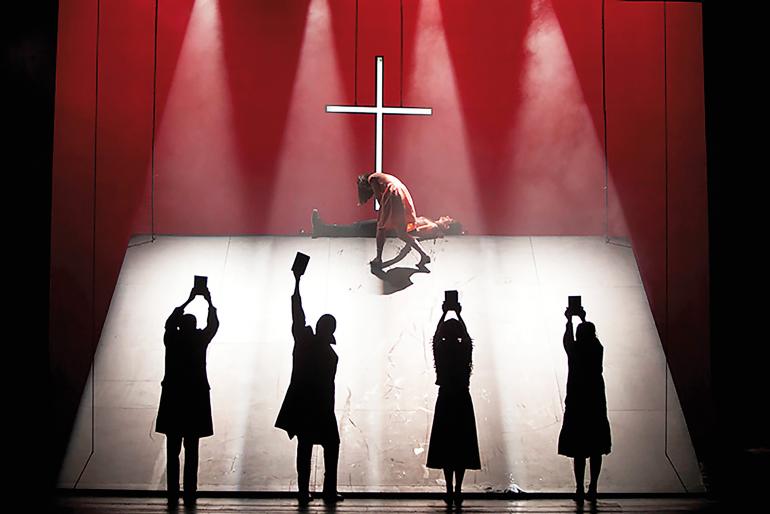
©️Nikos Pantazaras/Vasia Anastassopoulou
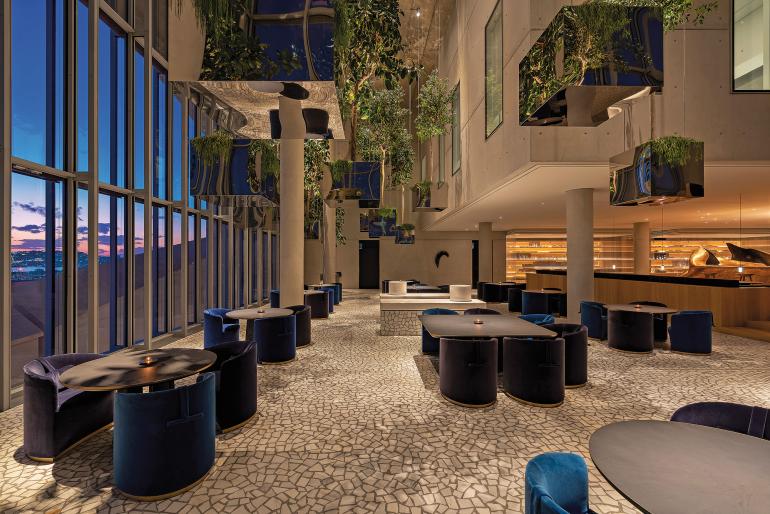
©️Gavriil Papadiotis
How do you remember your time teaching theatrical lighting in New York?
I taught for two semesters at NYU. Τhe great experience was life itself. In addition to seeing many shows on and off Broadway, art was everywhere in NYC, even on the streets. Inspiration could be a walk in Central Park or beside the Hudson River, visiting the Guggenheim, Metropolitan Museum, conversing with a street artist, or observing passersby. In New York, I learned that anything you dream of, you can create. I never forgot that.
You returned to Athens in the early 1990s. What pushed you back to your native land?
In 1992, I journeyed back to Athens, unaware that I would bring the art of lighting to theatres. The shows warmly embraced me, and gradually, the importance of lighting design took hold in numerous avant-garde theatres and other grand stages throughout Athens.
What was the most important moment in your career?
The Olympic Games and the Acropolis are notable points in my career. However, I would say that anything that stimulates my mind and stirs my senses and emotions is special and memorable.
What are your future plans?
Our next projects include three projects in Elliniko, the lighting of Monemvasia –lights will only turn on when there is no moon– completing the lighting study at the temple of Poseidon in Sounion, and we hope to install lighting at the temple of Aphaia, in Aegina. Other projects include illuminating Acrocorinth, Little Venice in Mykonos, and an installation in Elefsina in early July inspired by the myth of Persephone-Kore and Iris, the goddess.
Which image best reflects the greatness of light?
I cannot choose just one. The splendour of light reflects in the first light of dawn on Machu Picchu, in the shadows of the dry stone walls of Tinos, in the lava flows of a Hawaiian Volcano, and in candles in a monastery. There is the light of sunrise, or light that reflects from ancient sculptures of Pendellean marble, or captured in an impressionist painting, or in the eyes of a lover or a child. There is magic in the light of fireflies or from plankton on your skin as you dive into pristine waters. I could go on for hours describing what light is to me.
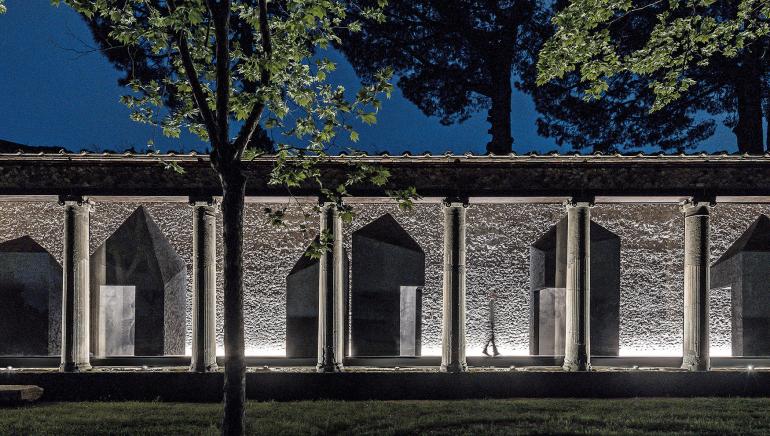
©️George Sfakianakis
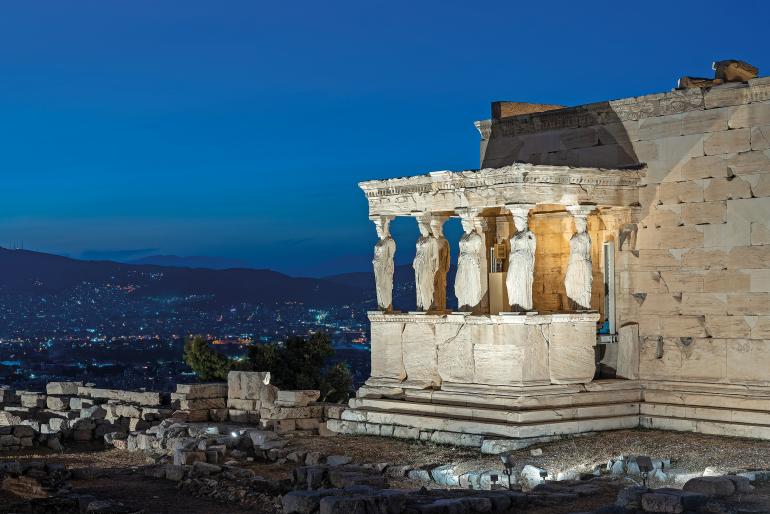
©️Gavriil Papadiotis
In an interview, you stated that, in spite of all your work, your favourite lighting is that of candles. Explain?
The truth is, candles are my favourite indoor lighting because they move me. Their light goes out without human intervention. They remind me of sunsets and our finite existence.
Is light or darkness more powerful?
In a dark room, what can a newly lit match achieve? It has the power to shake off the darkness. A small flame possesses a remarkable strength that surpasses the dark. Yet, we would not fully comprehend the significance of light if it were not for the existence of darkness. To me, the dance between darkness and light, their interplay and sequence, is a captivating waltz that holds true importance.
Is light borne from darkness?
It is its child, its negation, its twin brother, its own mother!
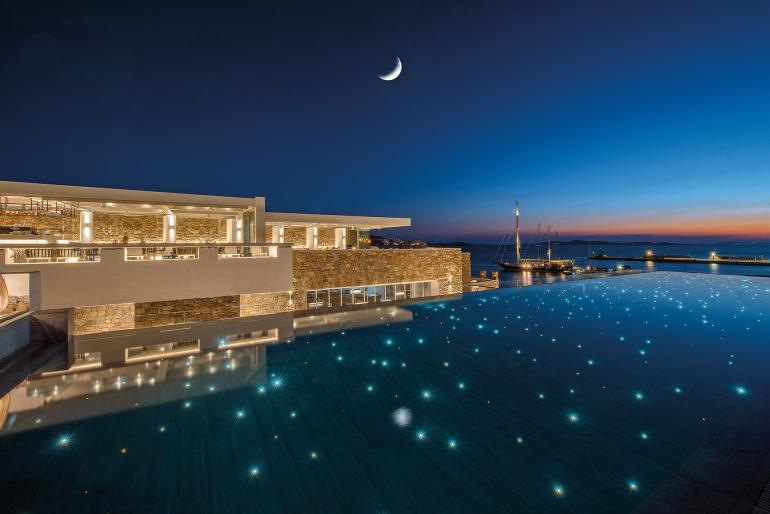
©️George Lizardos

©️George Lizardos
_____________________________________
TEXT : ROMINA XYDA

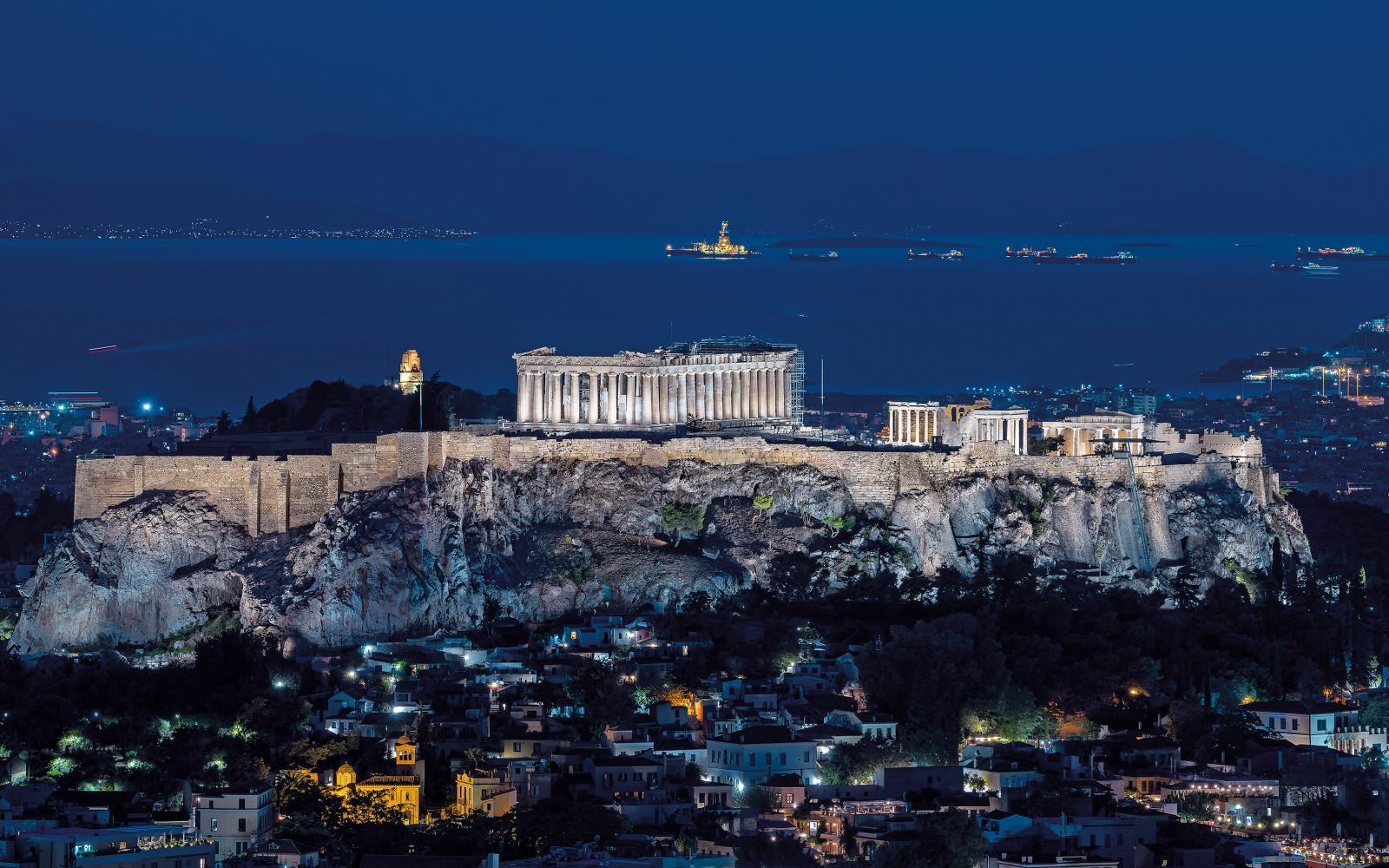
YOU MAY ALSO LIKE
Sailing in the Sporades
Makris Athens by Domes
Kykladitisses